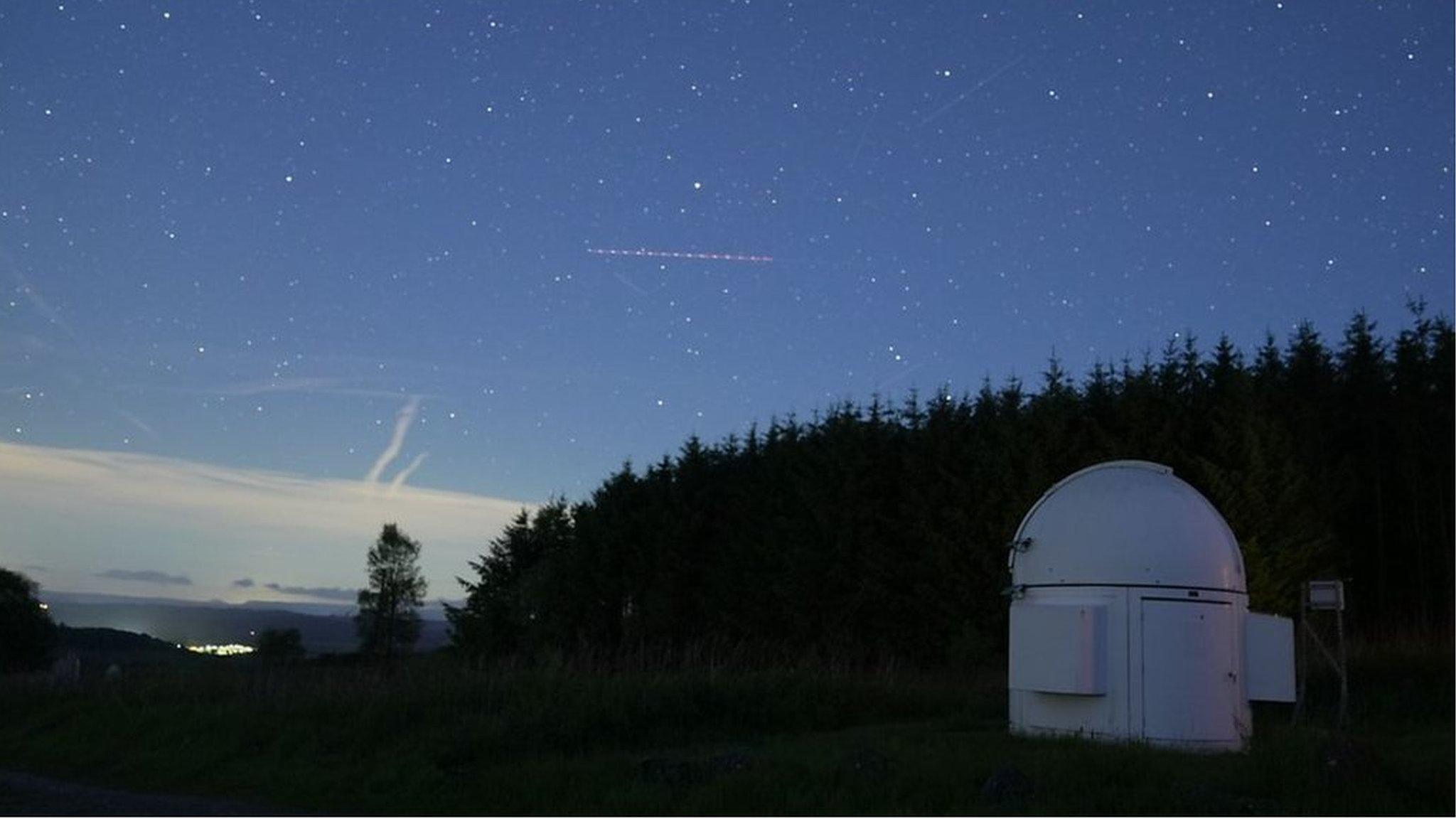Festival to celebrate 'inky skies and sparkling stars'
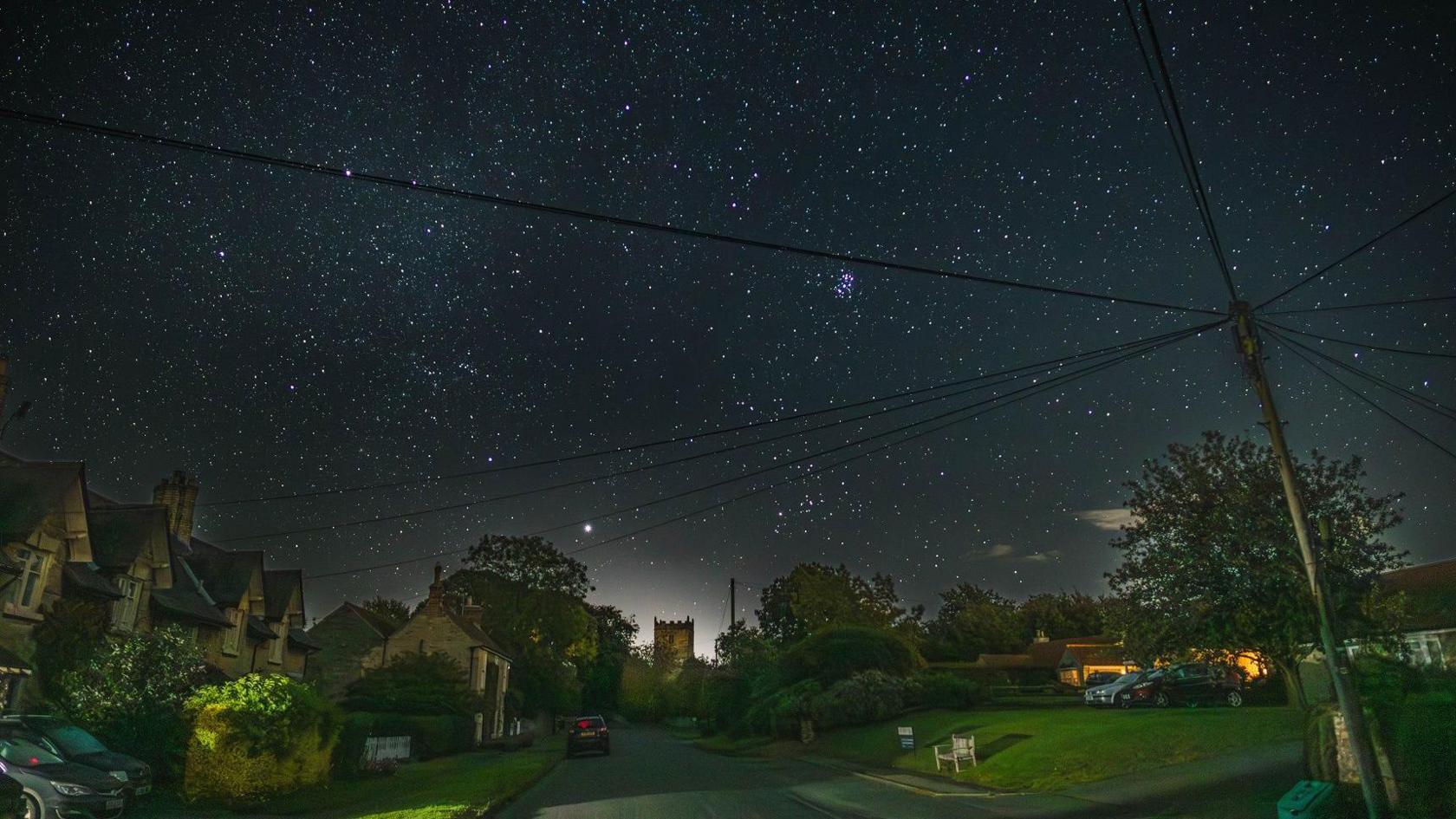
The night sky over the village of Bulmer in the Howardian Hills National Landscape
- Published
While the sun may not always shine over North Yorkshire, it is recognised as one of 200 places in the world where the stars sparkle brightest.
Since 2020, the North York Moors and Yorkshire Dales have been designated Dark Sky Reserves, and this week the Dark Sky Festival is celebrating its 10th year.
The festival includes more than 100 events, such as stargazing, craft activities, ghost walks, photography workshops and even an album release dance party.
The festivities are part of the global Dark Sky Movement, which encourages communities, parks and protected areas to preserve their skies through lighting policies and education.
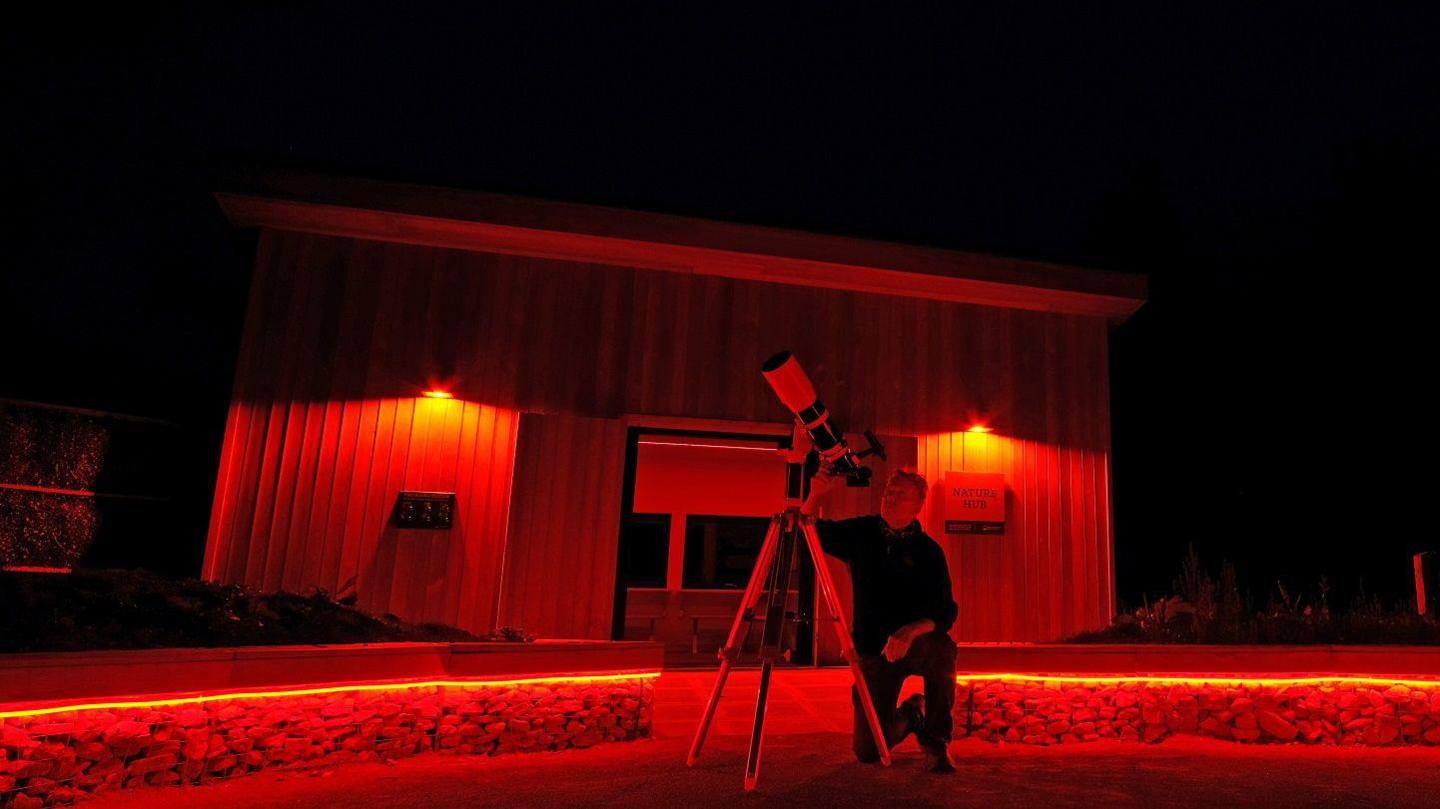
Richard Darn is running stargazing events at Sutton Bank Star Hub during the festival
Today, more than a third of Yorkshire's land area is under some form of dark sky designation, says amateur astronomer Richard Darn.
"The application can take two to three years to complete, it's like going for the Olympics. It takes hard work to get this status.
"As a Yorkshireman, it was a great moment. From dark skies being a fringe thing, it's now mainstream."
The festival will coincide with the planetary alignment, with Mars, Venus, Jupiter, Saturn, Uranus and Neptune appearing together in a row throughout January and February.
"It's not unheard of but it's quite unusual. Mars, Jupiter and Venus will be brilliant," says Mr Darn.
"This time of year is the very darkest time of year, so if you yearn for an inky black sky and sparkling stars, go out now.
"You can see things like galaxies, where the light has travelled millions of years before it reaches the telescope.
"The darker the sky the more impressive things look. Some things you can only really see in the rural areas of Yorkshire," he adds.
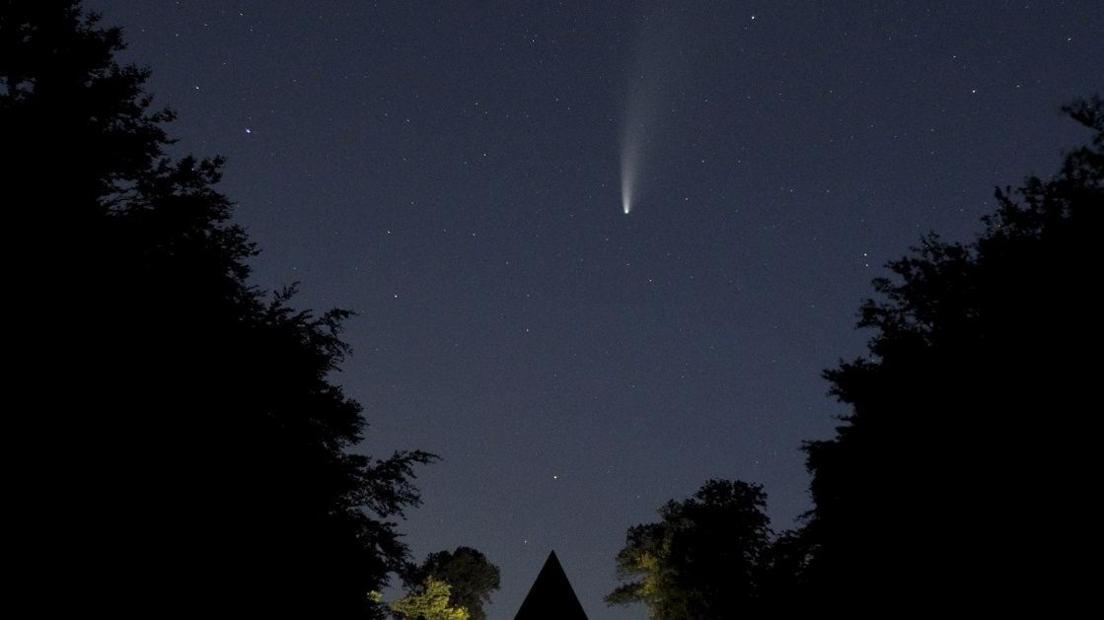
Comet Neowise over Castle Howard
Mr Darn adds that dark skies have a wider beneficial impact beyond stargazing opportunities.
"There are therapeutic benefits of the night sky. Just like walking down a river or being at the coast, human beings respond well to natural environments.
"But it's more than just that. Even on cloudy nights the dark sky is of value to wildlife.
"One third of all UK wildlife is nocturnal. A significant proportion of pollination of plants takes place at night by moths. So anything that's a problem for those species is a problem for us.
"It's great to have fun under a starry sky and see wonderous things but it's more than just that, it's about biodiversity, it's about tranquillity, it's about human health, so there are lots of reasons why dark skies are desirable."
'It's not about turning lights off'
To keep the skies dark, light pollution schemes have been rolled out across North Yorkshire.
In the North York Moors about 1,000 dark sky-friendly lights have been retrofitted, says Mr Darn.
He says the schemes are not about stopping light, but about using it effectively when needed.
"We all need light, and it's not about turning lights off – it's about using a light with a proper shield so the light goes where you want it and not where you don't want it, so we don't fly tip light into the atmosphere, we keep it under control.
"Perhaps we can use warmer colours of light rather than harsh white light, which seems from studies to be more friendly to wildlife. Consider if you've got a light permanently on, is that necessary?"
And if a dark, clear sky creates the environment needed for stargazing, don't worry about finding a telescope says Mr Darn. A smartphone is all you need.
"What you can achieve with a smartphone is gobsmacking," he says.
"We would never have recommended using smartphones a couple of years ago, whereas now I use them.
"I photographed the aurora using the phone I'm speaking on.
"Bring your phone with you and see if you can get a permanent memory."
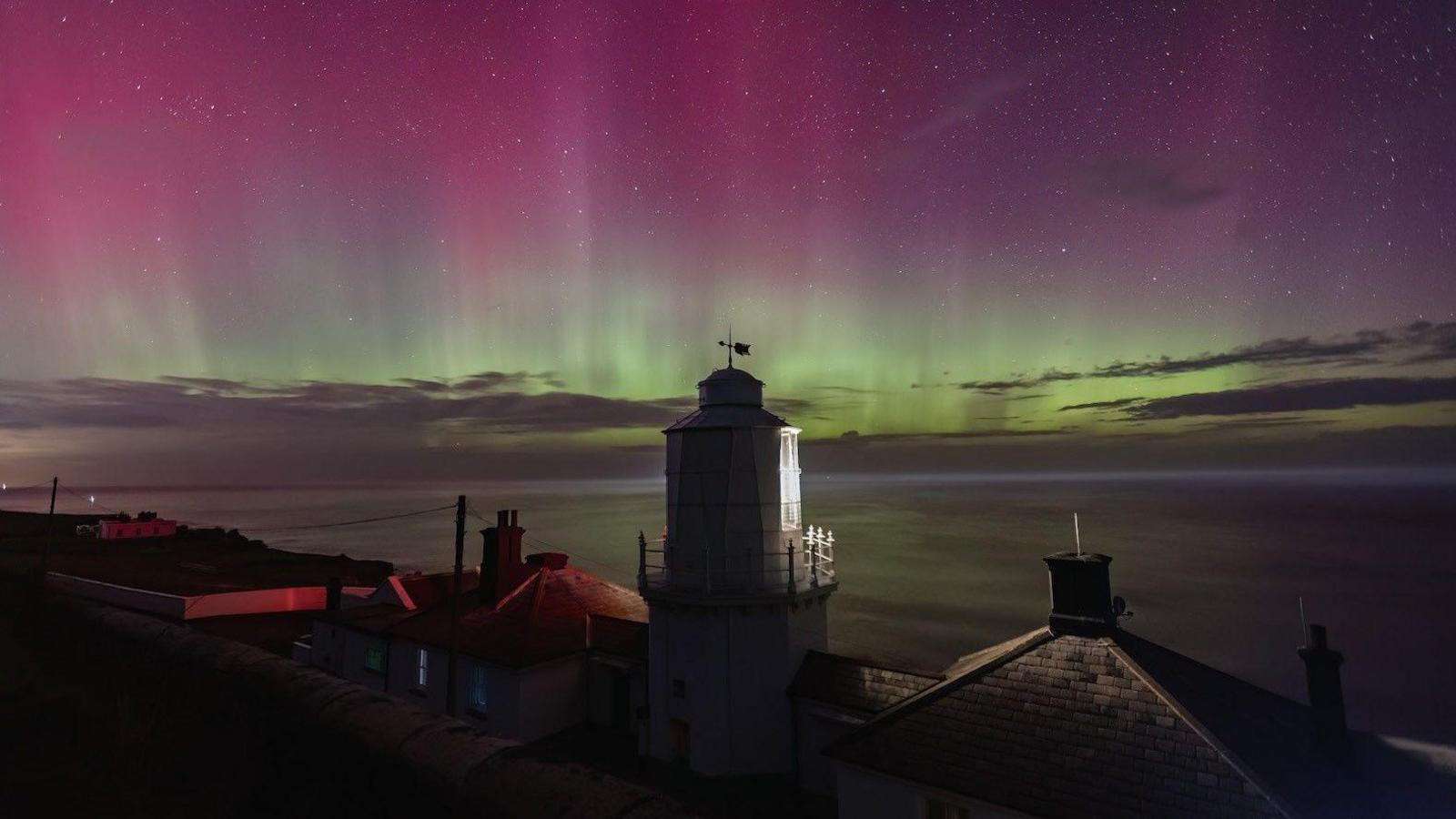
The Northern Lights were visible from Whitby in October
Mr Darn says smartphones have helped "democratise" astronomy; a perfect example of which was the incredible aurora displays of the last year.
"The one in October must have been the most photographed aurora in history because everybody used their smartphones," he says.
"Aurora chasing has had a massive growth. Aurora watching applies to all ages and genders.
"I've met groups of women who have met in car parks photographing the aurora and they will go where it is. It's democratised astronomy and made it more accessible."
Of course you can't guarantee a clear night in North Yorkshire - even if there is a festival.
There is always a chance – especially in February - that the weather won't play ball, and if that is the case, Mr Darn says, there's always a plan B.
"One way or another we'll take people on a journey through the heavens whether it's outside with a laser beam or inside using a planetarium programme. Plan B can sometimes be just as enjoyable."
Listen to highlights from North Yorkshire on BBC Sounds, catch up with the latest episode of Look North or tell us a story you think we should be covering here, external.
Related topics
Related stories
- Published16 February 2024
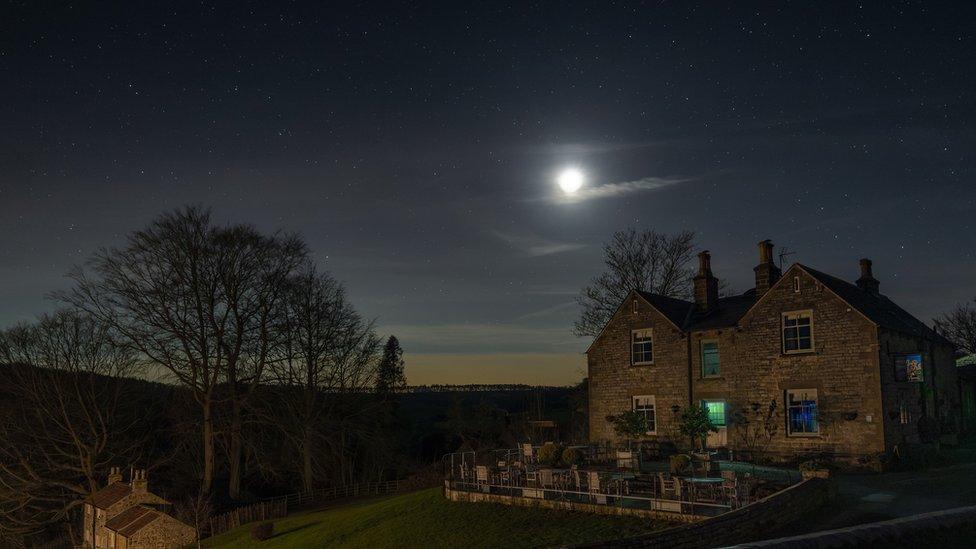
- Published20 January 2023
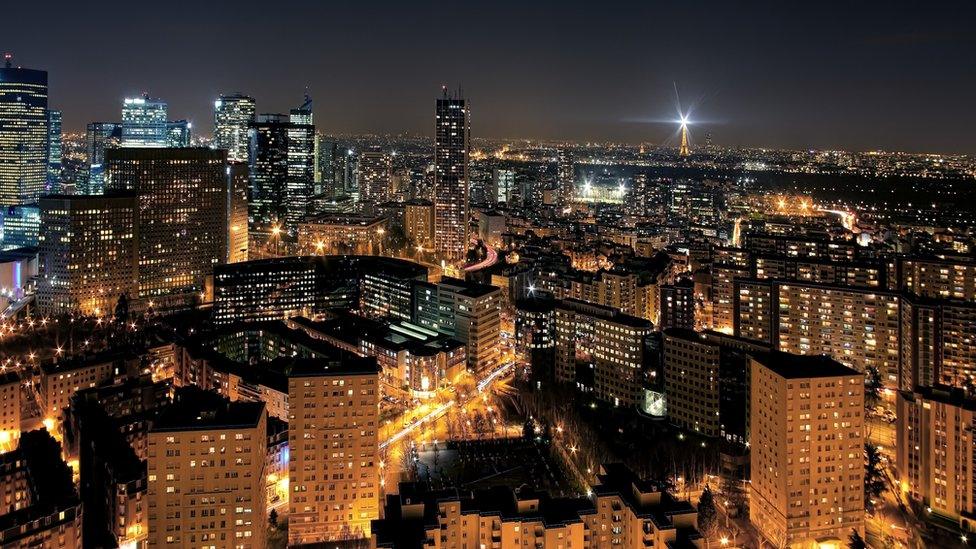
- Published8 June 2022
